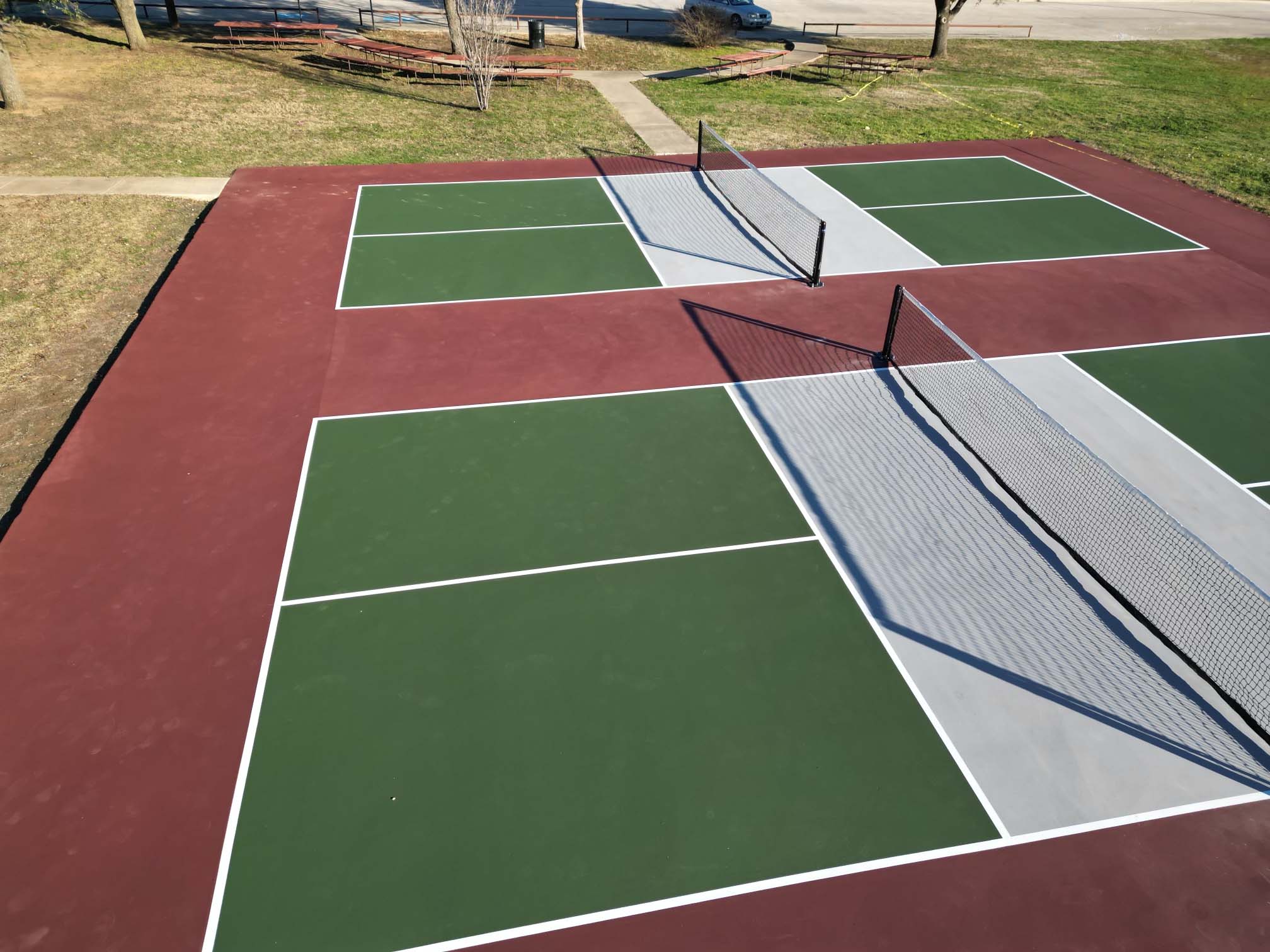Lasting Practices in Pickleball Court Building And Construction You Need To Know
As the appeal of pickleball continues to rise, so also does the need for sustainable methods in court construction. The effect of these methods expands far past the court itself.
Picking Eco-Friendly Materials
Picking environment-friendly products is an important action in the building and construction of lasting pickleball courts. The selection of sustainable materials not just minimizes environmental impact but also enhances the long life and efficiency of the court. Secret materials consist of reused rubber for the surface area, which offers exceptional resilience and shock absorption while drawing away waste from land fills.
In addition, utilizing in your area sourced products lowers transportation emissions and supports local economic climates. Pickleball court construction. Making use of native woods for fencing and seats can offer a sustainable aesthetic while ensuring durability versus the elements.
Integrating absorptive materials for court structures can even more add to sustainability by enabling all-natural water drainage and minimizing runoff. These selections not only secure local communities however additionally promote healthier play settings.
Efficient Drain Solutions
While the selection of eco-friendly materials is essential, carrying out reliable drain options is equally essential for keeping lasting pickleball courts. Correct water drainage not just protects the court surface area from water damages yet additionally minimizes erosion and runoff, promoting ecological integrity.
Reliable drain systems can consist of absorptive paving, which permits water to penetrate the ground instead than pooling on the surface. This decreases the chance of standing water, which can lead to mold and various other maintenance issues. Furthermore, integrating purposefully put water drainage networks and swales can direct excess water away from the court area, guaranteeing a dry having fun surface and stopping soil disintegration.
Using native vegetation in the landscape design around the courts can better improve drain by absorbing excess water and decreasing runoff. These plants need less watering and promote biodiversity, lining up with sustainable methods.
Furthermore, it is critical to on a regular basis preserve the drain system to guarantee its long-lasting performance. This consists of clearing debris and surveillance for clogs. By prioritizing effective water drainage solutions, pickleball court contractors can significantly add to the sustainability and durability of the facility, inevitably benefiting both gamers and the setting.
Energy-Efficient Lights Options
As the demand for pickleball remains to expand, integrating energy-efficient illumination choices right into court style has ended up being increasingly important for sustainability. Typical lights systems commonly take in excessive energy, adding to higher functional costs and environmental effect. Taking on contemporary, energy-efficient technologies is essential for both brand-new buildings and remodellings.
LED (Light Emitting Diode) lighting stands out as a top selection because of its durability and power cost savings (Pickleball court construction). Contrasted to standard illumination, LEDs make use of about 75% less power and can last as much as 25 times longer, dramatically minimizing upkeep costs. The directional nature of LED lighting lessens light contamination, making sure that illumination is concentrated on the court rather than bordering locations.

Sustainable Surface Alternatives
Checking out sustainable surface area alternatives for pickleball courts has actually gained grip amongst contractors and players alike. The focus on environmentally friendly products not just aligns with the growing ecological awareness but also improves the efficiency and toughness of the courts.
This product supplies outstanding shock absorption, lowering the danger of injuries for gamers while advertising sustainability. These tiles are easy to change and set up, and their versatility allows for different court setups.
Natural lawn courts are additionally emerging as a lasting selection, promoting biodiversity and minimizing the warmth island effect. Nevertheless, they call for regular maintenance and water, which might not straighten with all sustainability objectives.

Water Preservation Methods

Another effective technique entails the setup of rainwater harvesting systems. These systems keep and accumulate rain for use in keeping court surfaces and landscape design. This technique not only preserves drinkable water but additionally minimizes reliance on community resources.
Additionally, employing drought-resistant landscape design around the courts is click important. Indigenous plants require less water and are better adapted to neighborhood environment conditions, therefore lowering overall water intake. Additionally, using reliable watering systems, such as drip irrigation, guarantees that water is supplied straight to plant origins, reducing evaporation and waste.
Final Thought
Including sustainable he said techniques in pickleball court construction dramatically contributes to ecological preservation and resource performance. By prioritizing these techniques, the construction of pickleball courts can line up with broader environmental objectives while promoting longevity and capability within neighborhoods.
As the appeal of pickleball continues to increase, so too does the demand for sustainable techniques in court building.Choosing environment-friendly materials is a critical step in the building and construction of lasting pickleball courts. By focusing on energy-efficient lighting choices, pickleball court constructors can contribute to a much more lasting future while fulfilling the needs of stakeholders and gamers alike.Incorporating sustainable surface area alternatives not only boosts the efficiency of pickleball courts but also leads the way for implementing efficient water preservation methods.Incorporating sustainable methods in pickleball court building and construction substantially adds to environmental preservation and source performance.